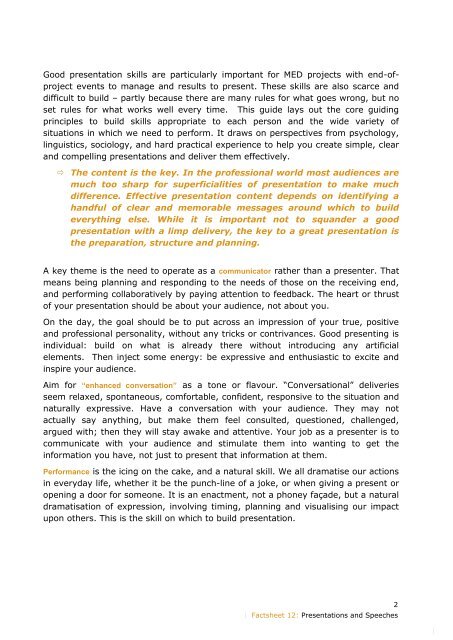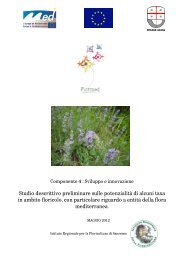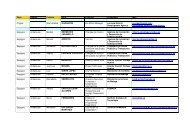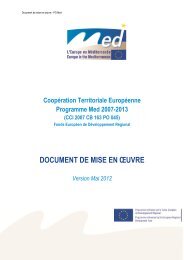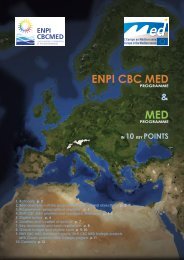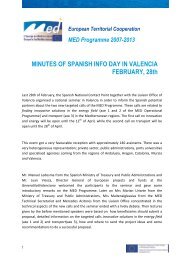MED Communication Handbook - Programme Med
MED Communication Handbook - Programme Med
MED Communication Handbook - Programme Med
You also want an ePaper? Increase the reach of your titles
YUMPU automatically turns print PDFs into web optimized ePapers that Google loves.
Good presentation skills are particularly important for <strong>MED</strong> projects with end-ofproject<br />
events to manage and results to present. These skills are also scarce and<br />
difficult to build – partly because there are many rules for what goes wrong, but no<br />
set rules for what works well every time. This guide lays out the core guiding<br />
principles to build skills appropriate to each person and the wide variety of<br />
situations in which we need to perform. It draws on perspectives from psychology,<br />
linguistics, sociology, and hard practical experience to help you create simple, clear<br />
and compelling presentations and deliver them effectively.<br />
� The content is the key. In the professional world most audiences are<br />
much too sharp for superficialities of presentation to make much<br />
difference. Effective presentation content depends on identifying a<br />
handful of clear and memorable messages around which to build<br />
everything else. While it is important not to squander a good<br />
presentation with a limp delivery, the key to a great presentation is<br />
the preparation, structure and planning.<br />
A key theme is the need to operate as a communicator rather than a presenter. That<br />
means being planning and responding to the needs of those on the receiving end,<br />
and performing collaboratively by paying attention to feedback. The heart or thrust<br />
of your presentation should be about your audience, not about you.<br />
On the day, the goal should be to put across an impression of your true, positive<br />
and professional personality, without any tricks or contrivances. Good presenting is<br />
individual: build on what is already there without introducing any artificial<br />
elements. Then inject some energy: be expressive and enthusiastic to excite and<br />
inspire your audience.<br />
Aim for “enhanced conversation” as a tone or flavour. “Conversational” deliveries<br />
seem relaxed, spontaneous, comfortable, confident, responsive to the situation and<br />
naturally expressive. Have a conversation with your audience. They may not<br />
actually say anything, but make them feel consulted, questioned, challenged,<br />
argued with; then they will stay awake and attentive. Your job as a presenter is to<br />
communicate with your audience and stimulate them into wanting to get the<br />
information you have, not just to present that information at them.<br />
Performance is the icing on the cake, and a natural skill. We all dramatise our actions<br />
in everyday life, whether it be the punch-line of a joke, or when giving a present or<br />
opening a door for someone. It is an enactment, not a phoney façade, but a natural<br />
dramatisation of expression, involving timing, planning and visualising our impact<br />
upon others. This is the skill on which to build presentation.<br />
� Factsheet 12: Presentations and Speeches<br />
2<br />
�


